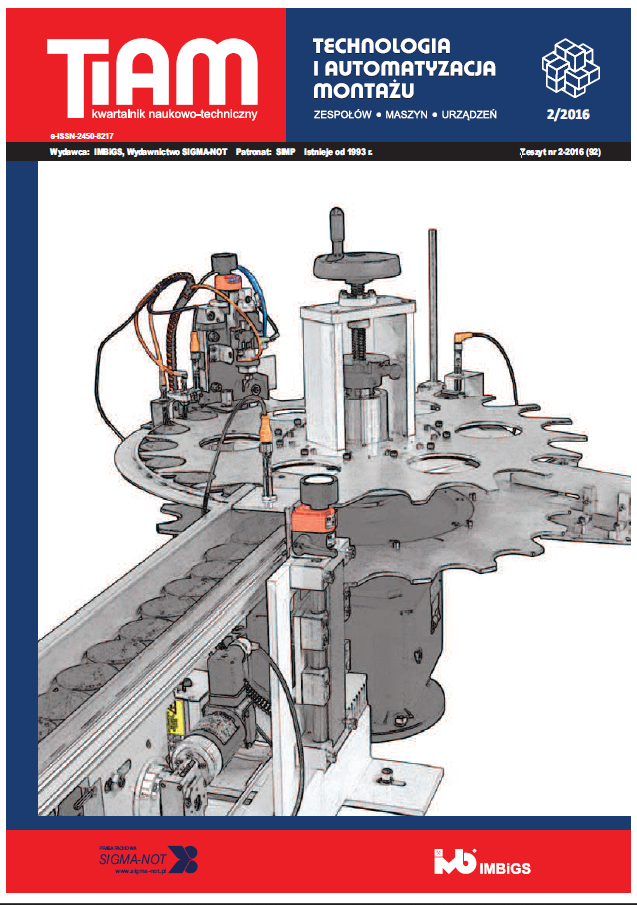Abstract
A flow shop systems connected with assembly are described in the introduction. The method of tactical planning (medium term and short-term) for a flexible assembly systems is presented in the next chapters. Demand for planning resources and optimization of stage workloads are regarded tasks of tactical planning. The first of tasks is connected with allocation of part feeders among the stages (the stage is set of parallel machines) – for an unidirectional assembly line with parallel machines (a hybrid flow shop). The second of tasks is related to balancing stage workloads. A parameters and variables are defined for solving of tactical planning problems. A procedure was constructed to estimate the workload of stadium which is a bottleneck in the system. This procedure was taken into consideration planned downtime of assembly machines, among others for repairs and maintenance of the machines. The method is also characterized by taking into account the random downtime of machines, for example connected with failures. The mathematical models of integer programming are constructed for the solving of described tasks of tactical planning. The first model is formulated for a fixed assembly routes and the second model is used for an alternative assembly routes. Two criteria are regarded in an objective function. The first of these concerns the balancing stages workloads. The second criterion is the minimization of flows between stages. The solution of tasks described in article are assignments of assembly operations to stages. The part feeders are also assigned to the stages. The results of computational experiments with the proposed method are presented. The results obtained for the different criterion weights and for a fixed and for an alternative assembly routes are compared.
This is an Open Access article distributed under the terms of the Creative Commons Attribution License CC BY 4.0 (https://creativecommons.org/licenses/by/4.0/)
References
Fourer R., D. Gay, B. Kernighan. 2003. “AMPL, A Modelling Language for Mathematical Programming”. Duxbury Press, Pacific Grove, CA.
Kobiałka J., P. Łukasik. 2015. „Symulacja procesów produkcyjnych – modułowe stanowiska dydaktyczne”. Technologia i Automatyzacja Montażu (2): 28–32.
Macha E. 2001. „Niezawodność maszyn”. Opole: Wydawnictwo Politechniki Opolskiej.
Magiera M. 2016. „Wybrane metody planowania przepływów produktów przez linie produkcyjne i łańcuchy dostaw”. Kraków: Wydawnictwo AGH (w druku).
Pindeo M.L. 2008. “Scheduling. Theory, Algorithms and Systems”. New York: Springer.
Sawik T. 1999. “Production Planning and Scheduling in Flexible Assembly Systems”. Berlin: Springer-Verlag.
Skołud B. 2006. „Zarządzanie operacyjne. Produkcja w małych i średnich przedsiębiorstwach”. Gliwice: Wydawnictwo Politechniki Śląskiej..

